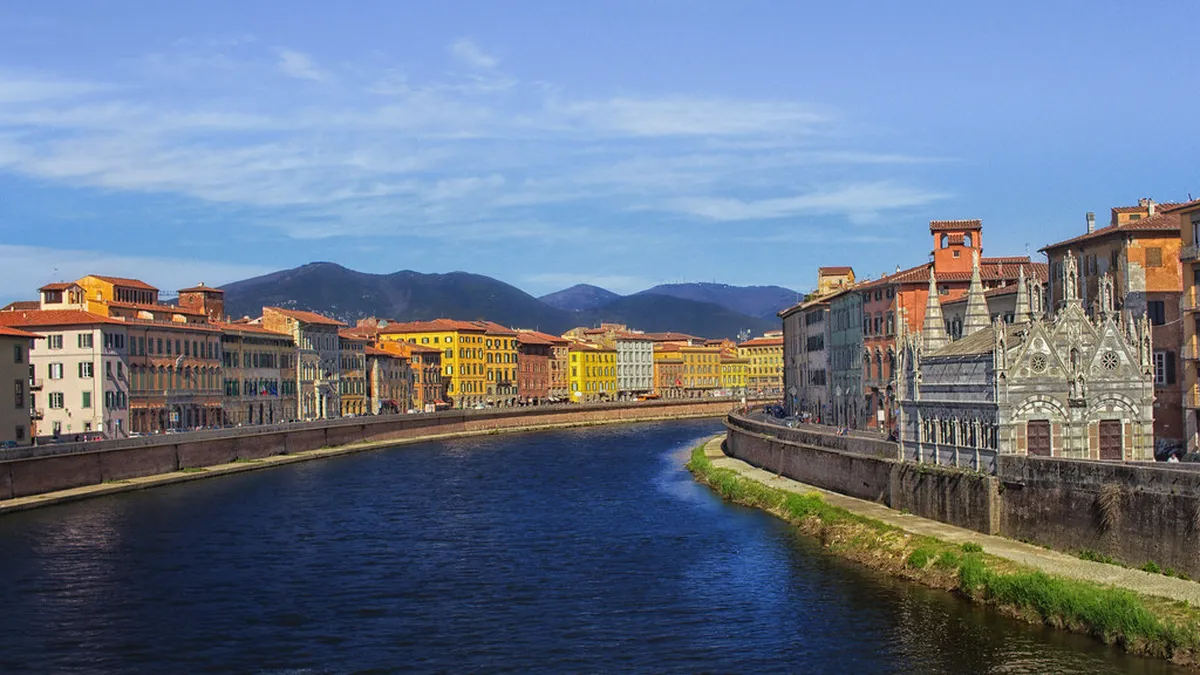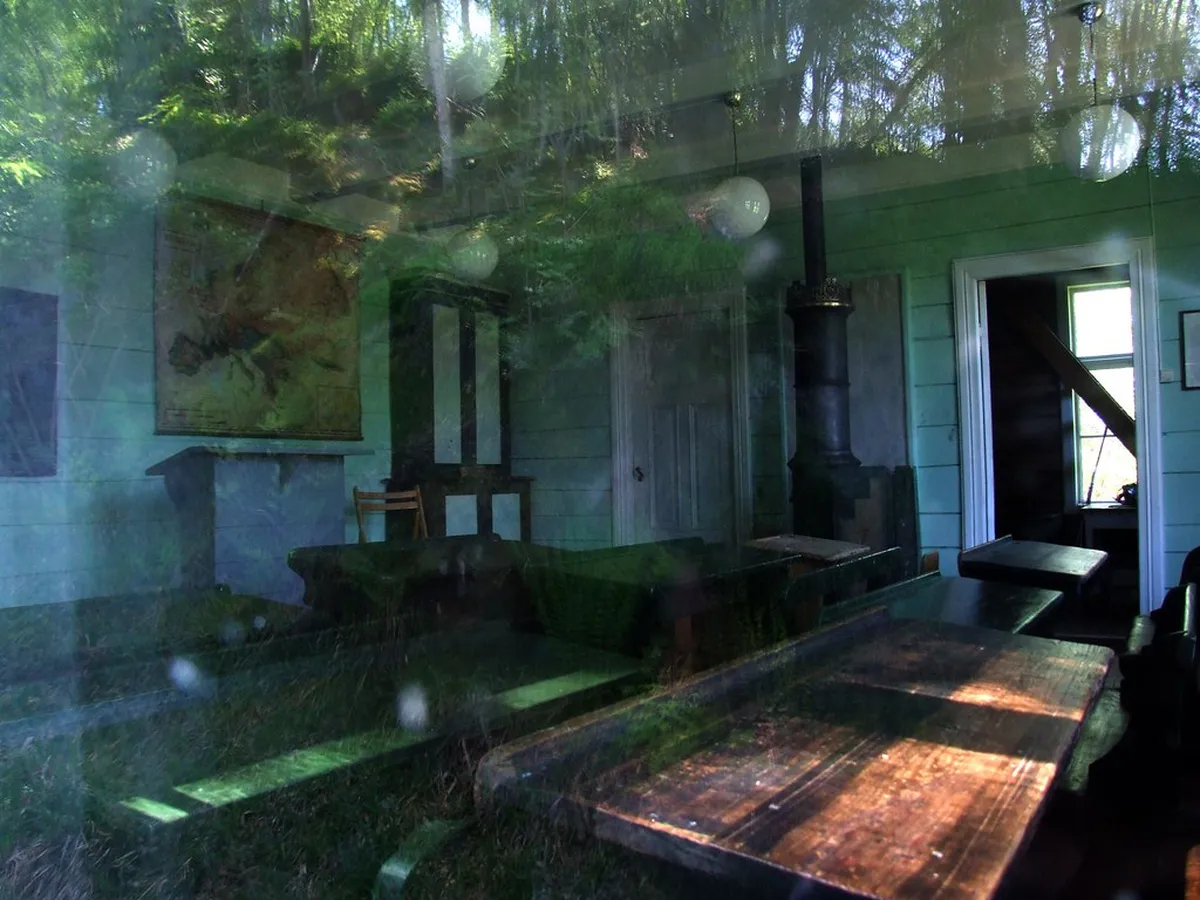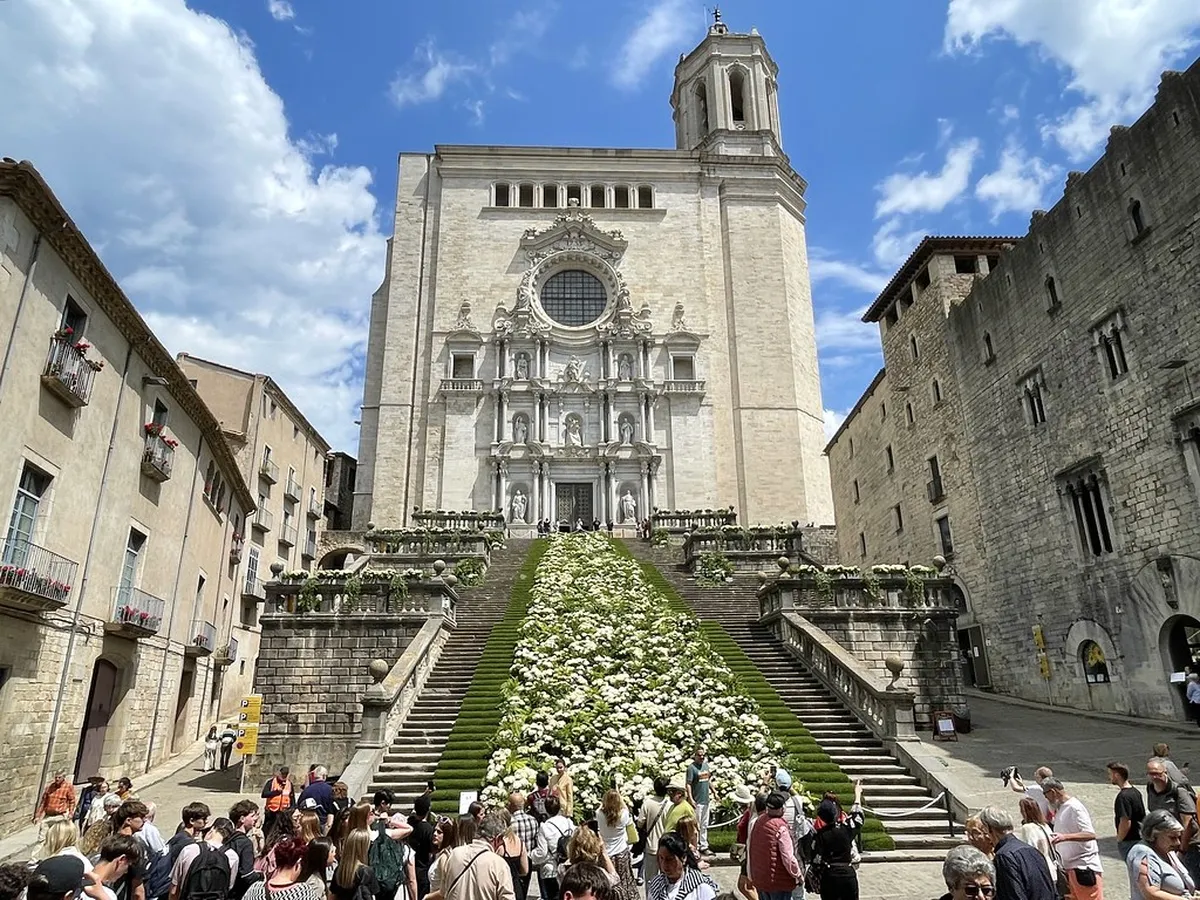Nagarkot Itinerary: Your Guide to Scenic Heights
Nagarkot is a serene hill station located just a short drive from Kathmandu, known for its stunning sunrise views over the Himalayas and lush landscapes. This itinerary will guide you through the natural wonders, cultural experiences, and adventure activities that make Nagarkot an ideal getaway. Whether you're looking to hike, meditate, or simply relax amidst breathtaking scenery, Nagarkot certainly offers an experience to remember. Coordinate your travel plans with our Bhaktapur itinerary. Arrange your visit using our Bandipur itinerary.

Key Takeaways
Plan this trip faster with our free online itinerary maker. Get a personalized day-by-day plan in minutes.
- Day 1: Arrive in Nagarkot, settle in your accommodation, and enjoy the sunset from Nagarkot View Tower.
- Day 2: Wake up early for a sunrise trek, visit local temples, and interact with the friendly locals for an authentic experience.
- Day 3: Engage in outdoor activities like mountain biking or paragliding, and explore the surrounding villages for a glimpse into local life.
Planning your Nagarkot itinerary?
- Kathmandu Itinerary: Explore for 5 Days in 2025 - Travel like a pro
- Patan Itinerary: 5 Days of Rich Culture and History - Schedule your trip
- Pokhara Itinerary: 3 Days of Adventure in 2025 - Unlock your adventure
Day 1: Arrival and Sunset Views at Nagarkot
Your adventure begins on Day 1 of the Nagarkot itinerary, where you'll be greeted by the serenity of the hills and the breathtaking views that the region is famous for. Nestled in the Kathmandu Valley, Nagarkot is a popular destination for both international tourists and locals alike, especially those seeking a respite from the bustling city life. Plan your perfect trip with our Bhaktapur itinerary.
Upon your arrival, it's essential to take some time to settle into your accommodation. Various options, from luxurious hillside resorts to cozy lodges, are available, each offering stunning vistas right from your window. Once you’ve freshened up, start your exploration by heading towards the nearby viewpoints that make Nagarkot a must-visit destination. Structure your adventure with our detailed Bandipur itinerary. Map out your exploration with our Bandipur itinerary.
Begin with a stroll to Nagarkot View Tower. This prominent spot offers panoramic views of the majestic Himalayan ranges, including the famous peaks of Everest and Langtang during clear weather. Be sure to grab your camera because you’re going to want to capture the landscape. When the sun begins its descent, the glow over the mountains can create a magical and unforgettable experience. Build your perfect itinerary with our Pokhara itinerary. Structure your adventure with our detailed Patan itinerary.
Pro Tip: Arrive at the viewpoint at least an hour before sunset to secure a good spot and enjoy the changing colors of the sky as night approaches. Map out your exploration with our Kathmandu itinerary. Plan your journey with our Itinerary Maker.
As sunset approaches, you will witness a breathtaking transformation of the landscape. The vibrant hues of orange, pink, and purple fill the sky, creating a visual spectacle. This moment, enveloped in the tranquility of nature, is sure to be a highlight of your trip. Afterward, head back to your accommodation and enjoy dinner with a view, experiencing local Nepali cuisine, which may include dishes like Daal Bhat and Sel Roti. Create your ideal travel schedule with our Taormina itinerary.
To help you plan your itinerary effectively, below is a simple reference table for Day 1:
| Time | Activity | Notes |
|---|---|---|
| 3:00 PM – 4:00 PM | Arrive in Nagarkot | Check into your accommodation |
| 4:00 PM – 6:00 PM | Visit Nagarkot View Tower | Enjoy scenic views and sunset colors |
| 6:00 PM – 7:30 PM | Dinner with a view | Sample local Nepali cuisine |
As you wind down from your first day in Nagarkot, reflect on the stunning views and serene environment that welcome travelers to this enchanting locale. Additionally, for those interested in mapping out the rest of your stay, make sure to check out ourDetailed Nagarkot Itinerary and consider exploring our Extended Nagarkot Itinerary for more insights and future adventures.
Ultimately, Day 1 of your Nagarkot itinerary sets the stage for a rewarding journey ahead. The combination of natural beauty and local culture in this mesmerizing locale will undoubtedly leave you eager for the explorations that await in the following days.

Tips to enhance your Nagarkot experience
- Kathmandu Itinerary: Your Ultimate 2025 Travel Guide - Explore with confidence
- Pokhara Itinerary: 5 Days of Adventure - See it all with our guide
- Bhaktapur Itinerary: Discover the Best of Bhaktapur in 2025 - Coordinate your travel plans
Day 2: Sunrise Trekking and Cultural Exploration
On the second day of your Nagarkot itinerary, get ready to witness one of nature's most breathtaking spectacles—sunrise over the Himalayas. The experience promises to invigorate your spirit and is a perfect way to start your exploration of this stunning location.
Begin your day early, ideally before 5:30 AM. The trek to the viewpoint, known as Nagarkot View Tower, is relatively short but might be steep in places. As you hike, you’ll enjoy the fresh, crisp air and the serene beauty of dawn gradually illuminating the mountains. Depending on the season, you might be treated to a landscape painted with hues of pink, orange, and gold as the sun rises over the majestic peaks of the Himalayas.
Upon reaching the viewpoint, take a moment to absorb the awe-inspiring scene. Sunrise in Nagarkot is not only an opportunity for photography enthusiasts but is also a moment of tranquility in the busy travel schedule.
Pro Tip: Bring a thermos filled with your favorite morning beverage to enjoy as you soak in the sights!
After the sunrise spectacle concludes, head back to your accommodation for a hearty breakfast. Recharge your energy with local delicacies. Popular choices include Sel Roti (a traditional rice-based doughnut) and fresh fruits from the region.
Once you've fueled up, embark on a journey of cultural exploration. Nagarkot is surrounded by quaint villages like Bhahre Danda and Chalal, which provide excellent opportunities to experience local life. Consider joining a guided tour or strolling through the villages. Here, you can interact with friendly locals who are often eager to share their stories and traditional customs.
During your village exploration, don't miss visiting ancient temples and shrines, such as the Bhagwati Temple. Its serene atmosphere, adorned with beautiful carvings, offers insight into the region's devout Hindu culture. Tour guides often share fascinating tales and legends, which further enrich your understanding of Nagarkot’s spiritual significance.
If you are an avid trekker, you can opt for more adventurous trails. The surrounding areas offer treks that connect to towns like Bhaktapur and Lalitpur. Such hikes not only reward you with breathtaking views but also the chance to witness the rural side of Nepal. Here is a brief table comparing popular trekking options:
| Trek Route | Duration | Difficulty Level |
|---|---|---|
| Nagarkot to Bhaktapur | 4-5 hours | Moderate |
| Nagarkot to Changunarayan | 5-6 hours | Moderate |
| Nagarkot Cultural Heritage Trek | 3-4 hours | Easy |
As the day winds down, return to Nagarkot for a wonderful dinner at your hotel or a local eatery. The culinary offerings often include a mix of traditional Nepali thali and international cuisine, catering to diverse palates.
For those looking to learn more about maximizing your visit, explore our 3-Day Nagarkot Itinerary for helpful insights and itinerary suggestions. Should you plan an extended stay, don't forget to check our 5-Day Nagarkot Itinerary for additional options.
Indeed, Day 2 of your Nagarkot itinerary combines an amazing sunrise with enriching cultural experiences. By balancing adventure with insight, you’ll leave with cherished memories and a deeper appreciation for this beautiful part of Nepal.
Day 3: Outdoor Activities and Local Interactions
Welcome to Day 3 of your Nagarkot itinerary, where adventure and cultural immersion await! After two days of breathtaking sunsets and stunning sunrises, this day focuses on outdoor activities and enriching interactions with the local community. Nagarkot is not only known for its panoramic views but also for its vast opportunities to explore the natural landscape and connect with the vibrant culture of Nepal.
Start your day early with a hearty breakfast at your accommodation. After fueling up, lace up your hiking boots and gear up for a thrilling adventure. One popular activity is the Trekking through the lush forests that surround Nagarkot. You can choose from various trails, some leading to historical temples and others providing splendid views of the Himalayan range. The most recommended trek is the route to Bhokra Hill, where you can immerse yourself in the serene beauty of the countryside.
As you trek, keep your eyes peeled for the stunning flora and fauna of the region. The trails are often lined with rhododendron trees, especially beautiful in full bloom during the spring season. Furthermore, this part of Nepal is home to various bird species, making it a haven for bird watchers.
“Exploring Nagarkot's trails feels like walking through a living canvas, painted with nature’s most beautiful hues.”
After several hours of trekking, find a quiet spot to relax and enjoy a packed lunch amidst nature. While you relish your meal, take the time to appreciate the tranquility that surrounds you. Post-lunch, consider visiting a local village. Engaging with the villagers provides a unique perspective on their lifestyle, culture, and traditions. The locals are often welcoming and eager to share their stories, enriching your travel experience.
For a more hands-on approach, you can participate in traditional activities such as pottery making or cooking classes where you’ll learn how to prepare authentic Nepali dishes. This is not only a chance to acquire new skills but also a way to bond with the locals over shared meals and laughter.
If you're seeking more adventure, try your hand at mountain biking or paragliding. Both activities offer exhilarating ways to capture the dramatic landscapes of Nagarkot from unique perspectives. For instance, paragliding provides an unmatched aerial view of the rolling hills and distant mountain peaks, making it a memorable addition to your Nagarkot itinerary.
As the sun begins to set, head back towards Nagarkot's viewpoint to wind down your day. Watching the sun dip behind the mountains while you reflect on your adventures is the perfect ending. Capture the moment with photographs, as the sky transforms into a tapestry of reds and oranges, leaving you with lasting memories.
For further inspiration, check out our more detailed guides such as Nagarkot Itinerary for 3 Days or consider expanding your trip with insights from our Nagarkot Itinerary for 5 Days for additional activities that cater to your adventurous spirit.
Thus, Day 3 of your Nagarkot itinerary beautifully encapsulates a blend of outdoor excitement and cultural connection, making it an unforgettable part of your journey in this serene corner of Nepal.
Best Time to Visit: Seasonal Insights for Your Nagarkot Itinerary
Planning a trip requires careful timing, and knowing the best time to visit is invaluable for crafting a memorable Nagarkot itinerary. Nestled in the Himalayas, Nagarkot is renowned for its breathtaking views, especially during certain seasons that enhance its natural beauty. To ensure you make the most of your experience, let’s delve into the seasonal highlights and what you can expect throughout the year.
The ideal times to visit Nagarkot are during the spring (March to May) and autumn (September to November) months. During spring, the region bursts into color with blooming rhododendrons and other local flora. Moreover, the visibility is significantly higher, allowing visitors to enjoy clear, stunning views of the snow-capped mountains. As the temperatures are generally pleasant, this season is perfect for trekking, photography, and outdoor activities.
On the other hand, autumn boasts mild temperatures and is another peak season for travelers. The post-monsoon clarity often means more vibrant sunrises and sunsets, showcasing the magical Himalayan landscape in its best light. Additionally, local festivals during this season showcase the cultural richness of the area, making your visit even more immersive. Notably, in both spring and autumn, you can expect daytime temperatures between 15°C to 25°C, perfect for exploration.
Pro Tip: If you want to avoid the crowds, consider visiting in late November or early March. The weather is still favorable, and the tourist traffic is reduced.
However, if you're tempted to visit during the summer months (June to August), it’s essential to consider the monsoon season. Although the landscape transforms into a verdant paradise, the heavy rains can hinder your travel plans. Trails can become slippery and challenging, making outdoor activities difficult and sometimes dangerous. Despite these challenges, summer does attract fewer tourists, so if you don't mind some rain, you can enjoy a quieter experience.
In contrast, the winter months (December to February) come with their own charms but also significant drawbacks. Nagarkot can be quite chilly, with temperatures dropping to around 0°C at night. However, if you are a fan of snow, visiting during this season may allow you to witness frost-kissed landscapes, creating a winter wonderland vibe. Just be prepared for potential road closures and limited access due to snow.
To summarize, here’s a quick reference table indicating the best times to visit Nagarkot:
| Season | Ideal Months | Highlights |
|---|---|---|
| Spring | March - May | Blooming flowers, clear views, pleasant temperatures |
| Autumn | September - November | Vibrant sunsets, local festivals, enjoyable weather |
| Summer | June - August | Less crowded, lush greenery, but expect rain |
| Winter | December - February | Cold temperatures, potential snow, quiet atmosphere |
Ultimately, choosing the best time for your Nagarkot itinerary can significantly impact your experience, whether you seek adventure, cultural experiences, or tranquil nature immersion. For more insights into planning your journey, feel free to check our Nagarkot Itinerary for 3 Days and if you’re planning for a longer stay, you might find our Nagarkot Itinerary for 5 Days helpful.
Travel Tips for Your Nagarkot Journey: Transport, Costs, and Safety
When embarking on a Nagarkot itinerary, it's crucial to be well-prepared for your adventure. From understanding transportation options to managing costs and ensuring safety, these travel tips will help you make the most out of your visit.
To begin with, let's discuss transportation. Nagarkot is conveniently located just about 32 kilometers from Kathmandu. Several transportation options are available for visitors. The most common way to reach Nagarkot from Kathmandu is by private taxi or shared vehicle, which can be easily arranged through your hotel or local travel agencies. Alternatively, public buses operate from the capital's bus stations, providing a budget-friendly means to arrive.
Pro Tip: If you choose the bus, plan for approximately 1.5 to 2 hours of travel time; it may vary depending on road conditions.
Upon reaching Nagarkot, you will notice its stunning landscapes and favorable altitude. It's an excellent location for breathtaking views of the Himalayas, especially at sunset and sunrise. Therefore, once settled, consider utilizing local transportation options like motorbikes, bicycles, or even walking for short distances, allowing you to fully immerse yourself in the natural beauty.
Next, let’s turn our attention to costs. Nagarkot can cater to several budgets, making it easier for every type of traveler. Accommodation ranges widely, from budget guesthouses priced as low as $10 per night to more luxurious hotels costing upwards of $100. Dining also varies; you can find local eateries serving delicious traditional cuisine for very affordable rates, often around $5-10 for a full meal. If you prefer a more upscale dining experience, some hotels offer international cuisine with prices to match.
| Expense Type | Estimated Cost (USD) | Notes |
|---|---|---|
| Accommodation (Budget) | $10 - $25 | Guesthouses and local lodges |
| Accommodation (Mid-range) | $25 - $75 | Comfortable hotels and inns |
| Dining (Local) | $5 - $10 | Traditional Nepali restaurants |
| Dining (Upscale) | $15 - $30 | Hotels and fine dining |
| Transport (Taxi from Kathmandu) | $20 - $30 | Depending on negotiation and vehicle type |
Finally, let's discuss safety while traveling in Nagarkot. While it is generally a safe destination, it’s prudent to follow some basic precautions. Always use reputable taxi services and confirm rates beforehand to avoid misunderstandings. When trekking, ensure you are wearing appropriate footwear and carry basic provisions like water and snacks. Additionally, it's wise to inform someone about your hiking plans, especially if you are going off the beaten path.
Moreover, if you’re planning to do some sightseeing, consider carrying a copy of your identification and local emergency contacts. Also, watch out for altitude-induced symptoms, as Nagarkot is situated at a high elevation. Staying hydrated and taking it easy can help mitigate these effects.
As you plan your visit, refer to our 3-Day Nagarkot Itinerary for more insights, or explore our 5-Day Nagarkot Itinerary for an extended journey. By keeping these travel tips in mind, you can ensure a safe and enjoyable experience in this picturesque destination.

Frequently Asked Questions
What is the best time to visit Nagarkot?
How many days are enough for Nagarkot?
What are must-visit attractions in Nagarkot?
How to get around in Nagarkot?
Are there other activities worth adding to the itinerary?
Where can I find authentic local experiences in Nagarkot?
This Nagarkot itinerary will help you uncover the stunning vistas, rich culture, and outdoor adventures that await in this beautiful hill station. Whether you're an adventure lover or seeking peace in nature, Nagarkot provides a memorable escape into the heart of Nepal. Start planning your Nagarkot itinerary today and create unforgettable memories!
Planning your trip to Nagarkot?



